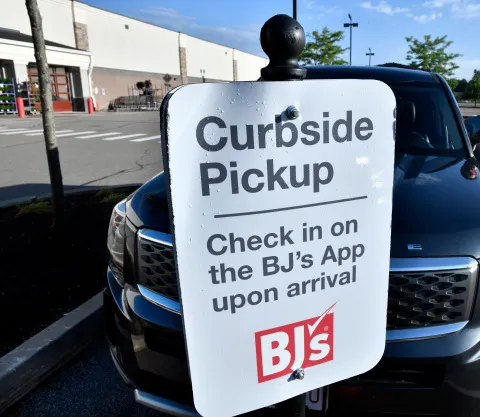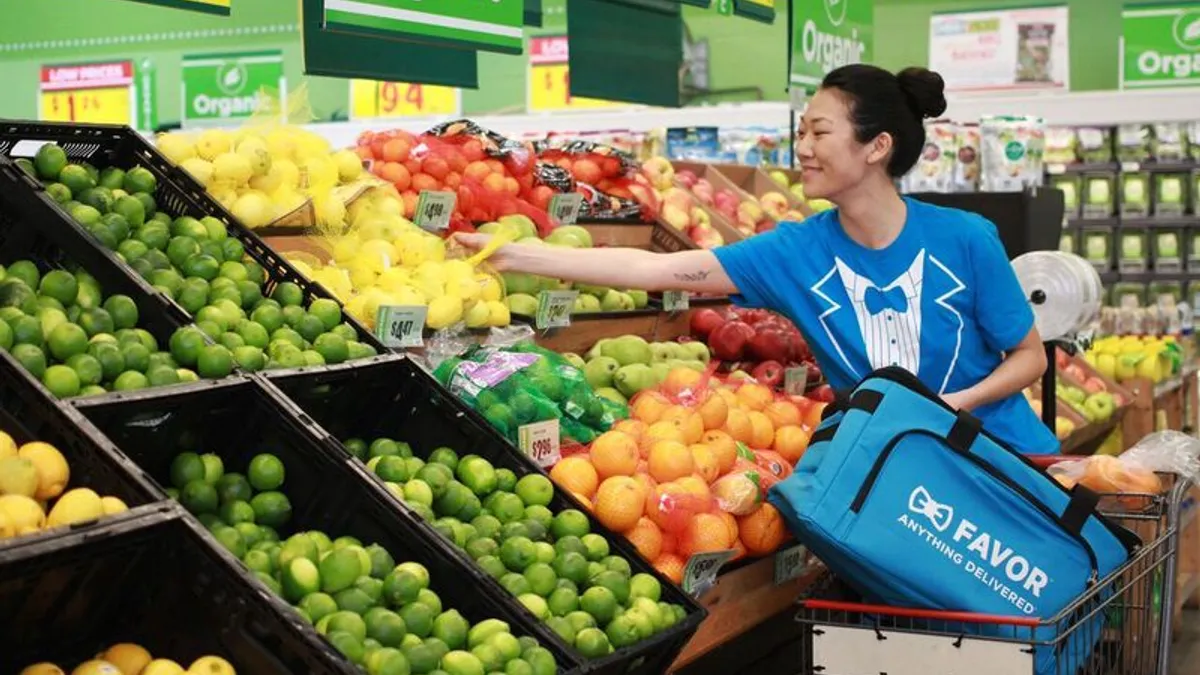Dive Brief:
- H-E-B took the top ranking over Amazon and Amazon Fresh in the first grocery e-commerce preference index from data science firm Dunnhumby.
- Walmart claimed the fourth spot while Sam’s Club came in fifth. The last three names in the index’s top third were Kroger, BJ’s Wholesale Club and Sprouts Farmers Market.
- Dunnhumby’s report on the index noted that the top driver of consumer preference was whether a retailer presented an owned digital e-commerce experience to shoppers. Retailers that rely mainly on intermediary companies like Instacart and Shipt, on the other hand, were seen as less reliable, had higher bounce rates and fewer reported page views.
Dive Insight:
H-E-B has consistently ranked at the top of consumer preference polls for its store experience. Now, it’s taken the top position in a rigorous new index focused on e-commerce shopping.
The Texas grocer’s digital shopping tools had the highest emotional connection with shoppers among the retailers Dunnhumby studied. It also had the highest share of wallet among its shoppers, the firm found. After the pandemic hit, H-E-B customers increased their online spending by 27% — the most among any of the retailers in Dunnhumby’s index.
So what’s the secret sauce behind H-E-B’s digital performance? Dunnhumby credited the grocer with making strategic, scalable e-commerce investments at the right time. The company launched pickup in 2015, then acquired delivery company Favor in early 2018, which grew into a technology hub for the retailer. In 2019, the company launched the My H-E-B app, which has become a preferred way for many of the chain’s shoppers to buy online.
“H-E-B’s impressive performance proves that it’s possible to compete and win against Amazon when it comes to grocery e-commerce. Their success offers mid-size and regional retailers a roadmap on how to succeed online,” said Grant Steadman, president of North America for Dunnhumby, said in a statement.
He continued: “The combination of a simple and easy to use shopping experience with a fantastic emotional connection with customers shows how grocers can thrive in this multichannel landscape.”
Dunnhumby outlined five primary drivers that influence where people prefer to shop online for groceries: Operating owned digital assets, ease and reliability of service, order substitutions, product quality and pricing. The first two were the leading drivers because they were closely correlated with the emotional connection shoppers formed with retailers’ online platforms as well as the perception of their overall performance, the firm noted.

Surprisingly, price was found to be the weakest driver of e-commerce provider preference. Dunnhumby postulated that this may be because many shoppers who visit retailers’ websites and apps are existing customers that have already bought into the company’s value proposition. Online, they’re looking to do mainly mission-based shopping and are more concerned about timing and convenience.
Price is still very important to online shoppers, Dunnhumby noted, especially amid rising inflation. But it doesn’t appear to be the driving factor in determining where people prefer to shop online.
“Omnichannel shoppers are more time-starved than brick-and-mortar only shoppers. If a retailer delivers on ease/reliability of the eComm experience to save customers time, this positive online customer experience will likely leave a halo effect on online prices and product quality,” Dunnhumby said in the report.
Dunnhumby’s index combined an analysis of web visits from 2019 to 2021 with a survey of 3,000 consumers who had shopped online for groceries at least once in the 30 days prior to being surveyed. The firm also factored in results from its annual retailer preference index in order to determine how well grocers are converting store shoppers to digital.
The other retailers that rounded out the top eight in Dunnhumby’s e-commerce index all benefited from operating e-commerce platforms that put their brand first, the firm noted. They also have the scale to control many of the digital assets they have and to innovate quickly. In all, the eight grocers that made up the top third of Dunnhumby’s index had two times the online share of wallet as retailers that finished in the bottom third.
The low scores that digital marketplaces like Instacart and Shipt received, meanwhile, underscore the challenges that these firms face in winning and maintaining shopper loyalty over the coming years. Some of these intermediaries, like Instacart and DoorDash, are expanding their white-label services and trying to capitalize on their strengths in emerging opportunities like digital ads and rapid delivery.
Dunnhumby noted that omnichannel shoppers — those that shop across multiple channels offered by retailers — comprise as much as 40% of all shoppers. The firm’s research indicates they make online purchases two times per month and spend around 25% of their grocery shopping dollars with a single retailer.













